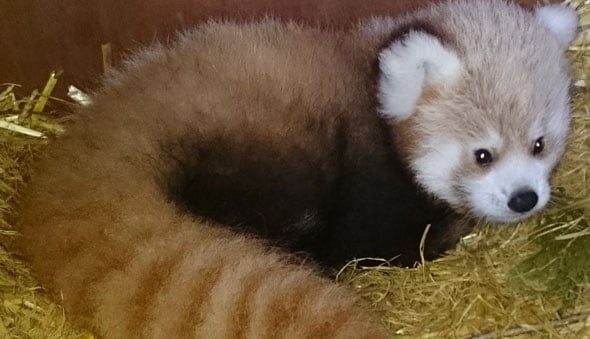Red Panda Cub Born

An Exciting Discovery!
Flamingo Land is proud to announce that we have a newly born red panda! It was discovered by one of our zoo keepers within one of the nest boxes on 4th June 2015. For the first ten weeks, disturbance to the cub was kept to a minimum, allowing its mother to deliver the care required. (Male red pandas usually have no involvement with raising young.)
Now that the cub is slightly older, the zoo keepers have sexed the cub as female but have yet to decide on a name. The cub is just beginning to explore the surroundings outside of the nest box by looking out of the entrance hole, however, we assume it won’t be long until she is out and investigating her enclosure! Her parents, Tai Jang and Bai Jiao, have been resident at Flamingo Land for 2 years and have been on display since January 2014. This is the pair’s first cub, so it is a very exciting time for the staff here and we are delighted at the cub’s progress so far.
The red panda looks similar to a raccoon but is predominantly red in colour, hence the first part of its name. The second word, panda, makes us think of the giant panda which is a lot larger and black and white in colour. However, these animals are not related! The only similarities between them are that they are both native to China, their diet mainly consists of bamboo, and they have a modified wrist bone which can be used as an extra digit.
Red pandas are natively found in several countries in the Himalayas; therefore need to have very thick fur to keep them warm. The trees where they would live are often covered in red moss, so their red fur helps them to camouflage against predators, such as the snow leopard and martens. They also have white fur on their face around their eyes, nose and ears. Unlike the giant panda, they have a long bushy tail which they use for balancing whilst climbing trees.
Due to the poor nutrients the red panda obtains from the bamboo, it is only active for about half of the daytime, and this would usually be at dawn and dusk. For the remainder of the time the red panda would often be found high up in the trees sleeping.


